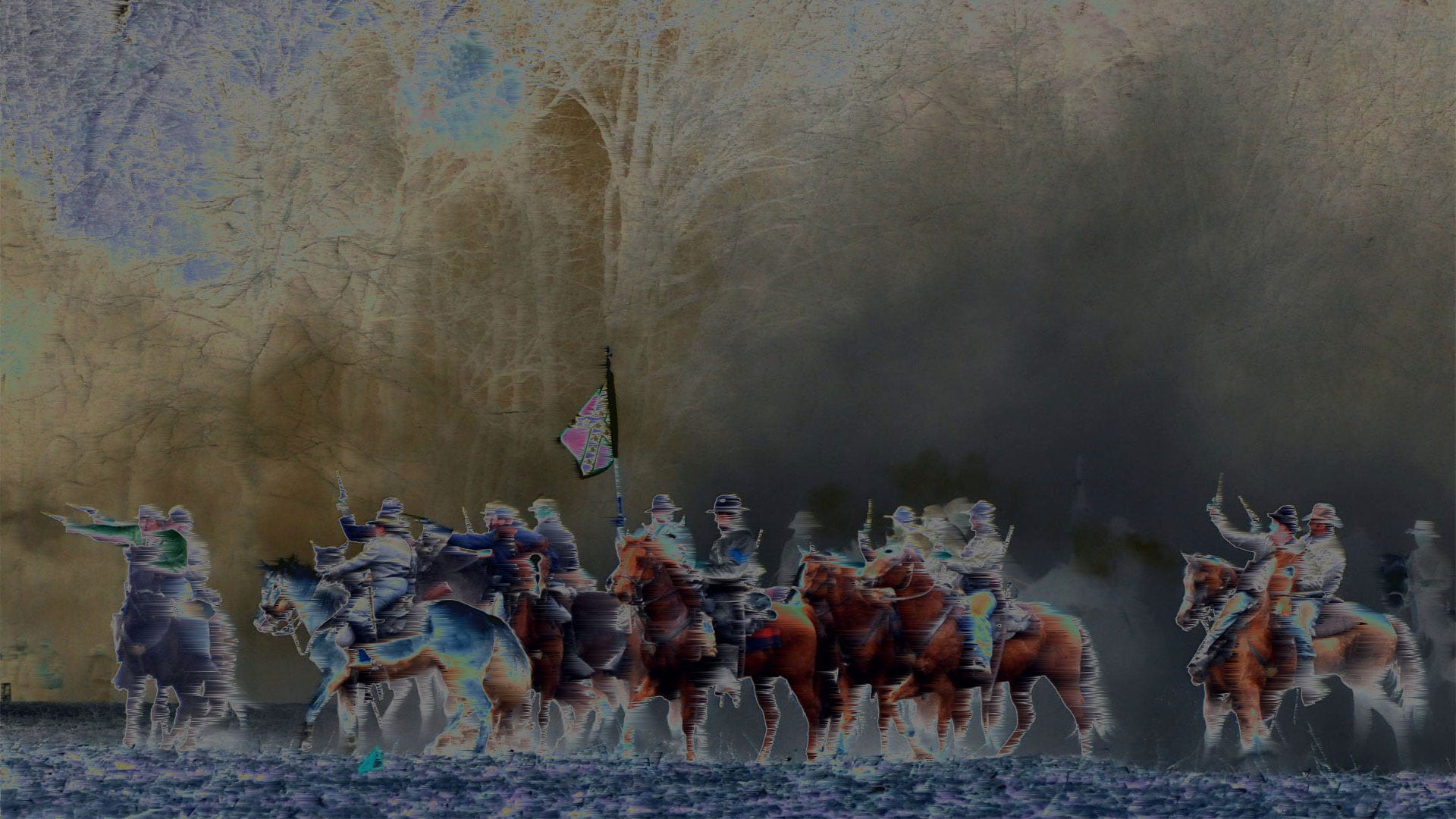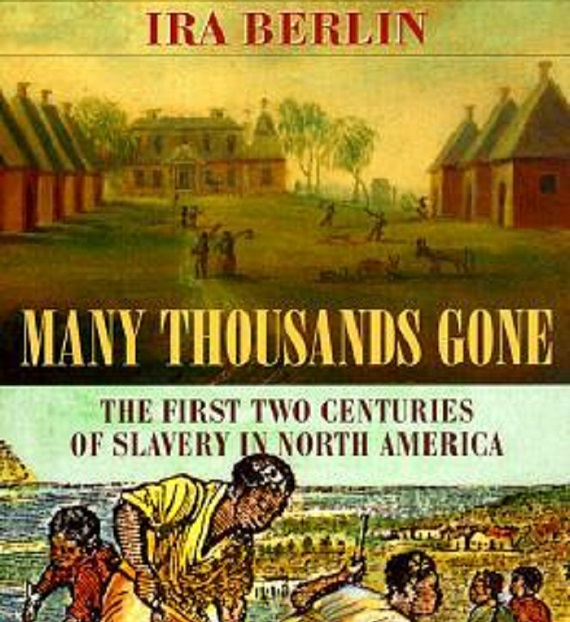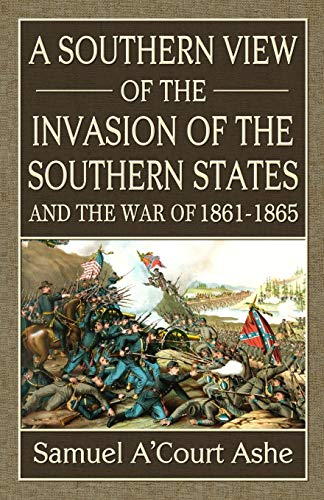A review of Many Thousands Gone: The First Two Centuries of Slavery in North America (Harvard, 1998) by Ira Berlin
For an understanding of the Atlantic-African slave trades and the origins of the peculiar institution in North America, Prof. Berlin’s Many Thousands Gone is a must read (along with Hugh Thomas’ The Slave Trade: The Story of the Atlantic Slave Trade, 1440-1870 [1997] ). An expert in African-American history at the U. of Maryland and long-time editor of Freedom: A Documentary History of Emancipation, 1861-1867 ( 4 vols., 1982-1993), Berlin brings to the task of explaining what today seems impossible to imagine his own considerable talents as a(n)historian and a welcome objectivity.
The answers he provides are thus more nuanced and perhaps not as satisfying as some would like to hear. “New World slavery,” he notes, “did not have its origins in a conspiracy to dishonor, shame, brutalize, or reduce slaves on some perverse scale of humanity-although it did all of these at one time or another….” At bottom, and the root of it all, was greed on the part of all involved (African, European, and Muslim) who sought wealth for personal and for imperial reasons.
******************
The lack of historical perspective today supports the mistaken belief that the American South somehow introduced and perpetuated African slavery in North America, and that the Confederate Battle Flag somehow represents this gross inhumanity.
The truth is not difficult to find, and it is that a Portuguese ship brought the first African to North America, and well after the Spanish had brought them, already enslaved by their African brethren, to the islands of the Caribbean – the latter done after it was found that the local Indians they had enslaved for work died off too quickly.
The British fostered the rise and perpetuation of African slavery in America as a colonial labor system – and African chieftains supplied their needs with captured men, women and children.
The New Englanders quickly followed the British example and became preeminent slavers in their own right, with the economic base of that region founded on slave trade profits, and the later mills of Massachusetts dependent upon slave-produced cotton for profitability.
The American South fought no more fought to preserve slavery than did the American Colonies after Lord Dunmore’s infamous emancipation proclamation of 1775; nor was the United States fighting for the preservation of slavery after Vice Admiral Sir Alexander Cochrane issued his own emancipation proclamation in 1814.
The American South fought for political independence from a North which had lost its moorings to the Constitution of 1789 which held the States together. The South had remained faithful to that document, and departed that federation to maintain its political liberty. The North prosecuted a devastating war to prevent that political liberty, “freed” the slaves which they themselves had helped securely fasten upon the South, and converted them into a dependable voting bloc with which to maintain political hegemony over formerly free States.
Bernhard Thuersam, www.Circa1865.org The Great American Political Divide
The Slave Trade
“In the library of the State College at Raleigh, N.C., there is a notable book of some three hundred and fifty pages and forty-nine illustrations – the fifteenth publication of the Marine Research Society, of Salem, Mass., and published in Vermont – the title being: “Slave Ships and Slaving.” The introduction is written by a British navy officer, and the text is by George F. Dow.
Within ten years after the discovery of America the Spaniards began to transport Africans to work in their possessions, and all the maritime nations of Europe followed their example; and during the next two hundred and fifty years the English transported twice as many as all other countries put together. They began in Queen Elizabeth’s time, kept it up in the next reign, and, in 1662, the Duke of York undertook to transport to the British Colonies three thousand slaves every year. Ten years later the King himself became interested and, under contract, England got from Spain the exclusive right to supply the Spanish colonies [with African slaves]; and the King of England and the King of Spain each received one-fourth of the profits.
Between 1680 and 1688 England had two hundred and forty-nine slave ships; from 1713, for twenty years, 15,000 slaves were annually brought to America. In 1786, England brought over 97,000 slaves. During eleven years, 1783-1793, Liverpool owned eight hundred and seventy eight vessels in this trade, and imported many thousands of slaves in the West Indies. They were worth some 15,000,000 pounds of that period; equal to about $150,000,000 now [1930].
While Liverpool was the chief port for this trade, Bristol was a close second. Then, over here, New England was not slow. Massachusetts started in 1638. However, Rhode Island became the rival of Liverpool. Ten pages on this volume are devoted to the operations in Rhode Island. There nearly everyone was interested.
In 1750, “Rum was the chief manufacture of New England. About 15,000 hogsheads of molasses were annually converted into rum in Massachusetts alone. The number of stills in operation was almost beyond belief. In Newport there were no less than twenty-two.” With rum they purchased Negroes in Africa; these were exchanged for molasses in the Caribbean Islands and South America, and the molasses was brought to the New England stills; and so the profitable business was carried on in a circle to an extent beyond ordinary imagination!
It was the very basis of New England’s prosperity. At Newport, Bristol and Providence [Rhode Island], some of the most respectable and wealthy merchants were engaged in the trade. Even preachers and philanthropists were advocates. “One elder, whose ventures in slaving had usually turned out well, always returned thanks on the Sunday following the arrival of a slaver that the Africans could enjoy the blessing of a Gospel dispensation.”
The Southern colonies had no ships, nor any molasses. They were not in the trade. However, the British Slaving Company, in which the King of England was a partner was in duty-bound to supply the needs of the colonies as particularly required by Good Queen Anne. The Colonies were forbidden to manufacture, and their products were required to be shipped to England, where they were exchanged for British goods. So the more slaves making products, the more goods the Colonies bought in England.
At length Virginia forbade any more importation [of Africans] but the King annulled that Virginia law. In Jefferson’s draught of the Declaration of Independence he denounced the King most severely for annulling these prohibitions. However, in 1774, importations were forbidden by the people of North and South Carolina, and there were no importations until 1803, when South Carolina opened her ports for four years.
Great Britain abolished the [slave] trade in 1807, just as the Congress of the United States did. After a few years, other countries followed our example: Spain in 1820, Portugal in 1830; but the trade between Portuguese Africa and Brazil did not cease until Brazil, in 1888, put a stop to it. That this volume has been prepared by the Marine Research Society, of Salem, Mass., speaks well for New England, and it should be in every library of the South.”
(The Slave Trade, Capt. S.A. Ashe, Confederate Veteran, December 1930, pg. 457)










